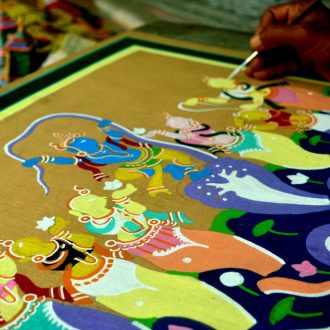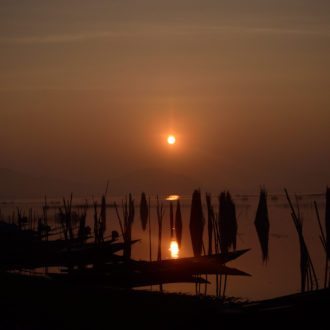Gotipua – the traditional dance performed by boys
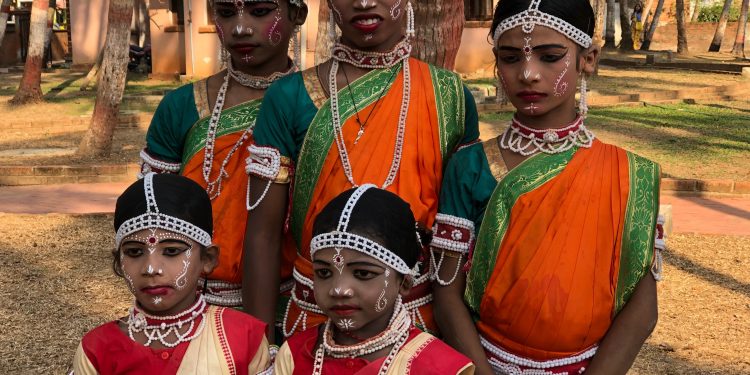
When you think of ancient traditions, colourful crafts, performing arts and forgotten folklore, you think of Odisha. Home to several crafts and craftsmen, there are several painters, puppeteers, weavers and sculptors here. And all of them dedicate their lives and art to the triad deities – Lord Jagannath and his siblings. And a visit to Raghurajpur , the Heritage Arts and Crafts Village, located 15 kms from Puri. you enter the world of traditional art , music and dance, be it the colourful patachitra or the mesmerising Gotipua dance.
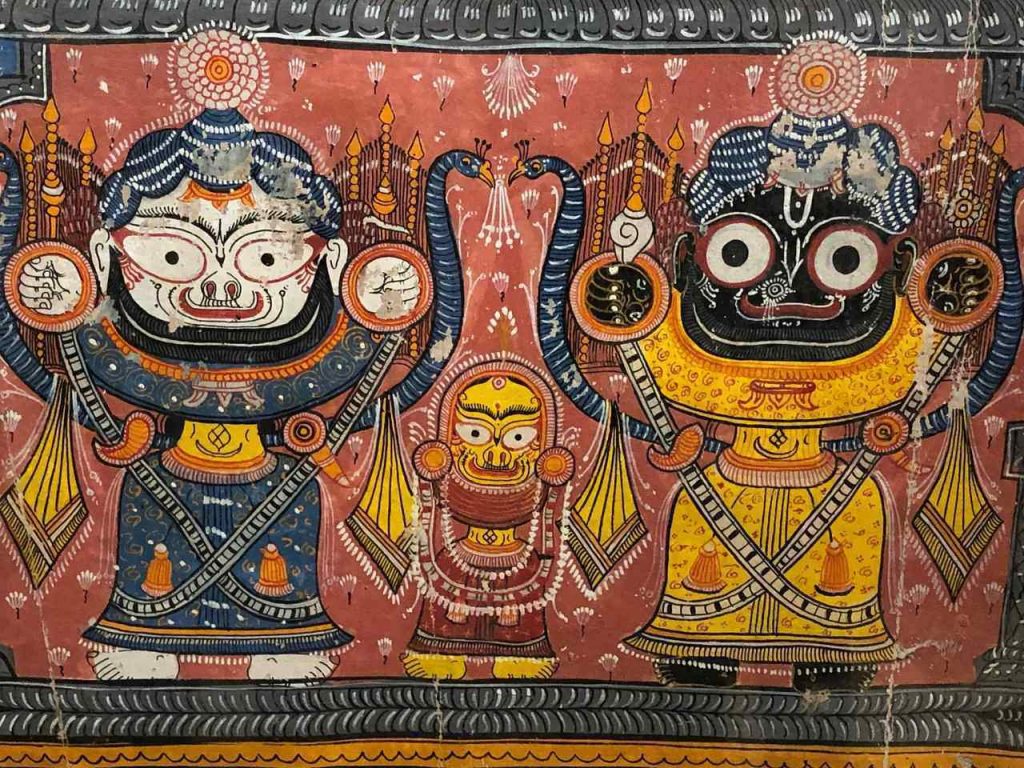
It feels like a virtual art gallery the moment I enter the portals of Raghurajpur. Every resident here is an artist or a Chitrakaar and the village is synonymous with Patachitra, the traditional scroll paintings that apparently date back to the 4th century.
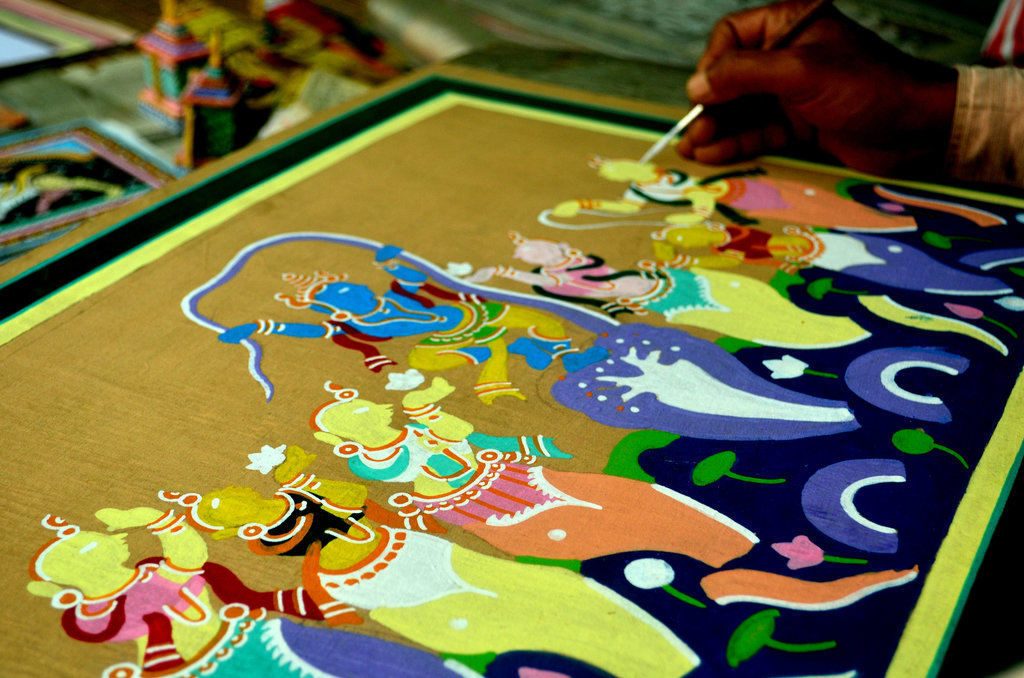
A patachitra in progress
The artists invite me inside to showcase their crafts but I am in awe of the vivid murals that adorn the façade of their houses. Birds fly out the canvas, seasons change, and trees flower while deities and demons narrate legends. But the reigning theme is the portrait of the triad deities – Lord Jagannath and his siblings, Balabhadra and Subhadra who gaze upon you from every wall.
However, there is more to Raghurajpour than the patachitra. As I potter around the village, I hear strains of music and the rhythm of beats, echoing from a small lane. I follow the melody and a few artists guide me to a house with a large hall where young boys, dressed as girls perform a traditional dance .” We call it the Gotipua. Goti means single and pua means boy, “ says one of the dance masters as they take a small break before resuming practise. “Gotipua dance was once a solo performance and the boy had to master both singing and dancing besides being adept at playing musical instruments, “ he adds.
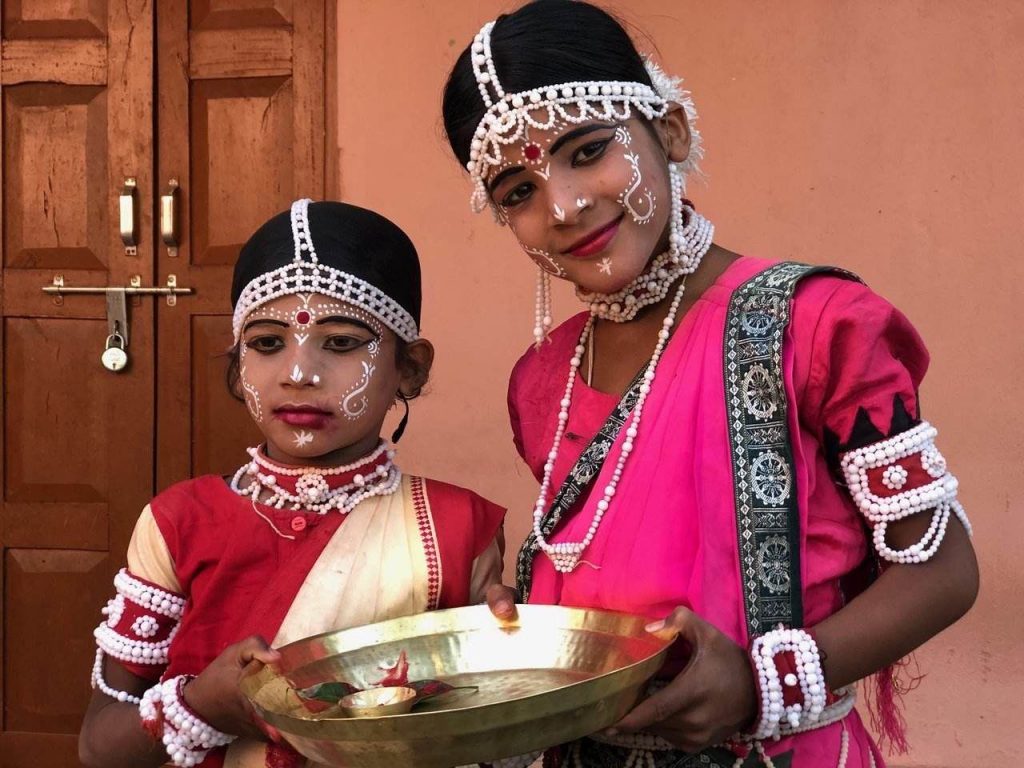
As the dance continues, I am schooled a little more in the history of Gotipua. This traditional Gotipua dance was initially a ritual performed at the Lord Jagannath temple by Maharis or Devadasis. Slowly they were replaced by young boys, dressed up like women. The boys joined the Gurukul when they were barely five years old and they lived here until their adolescence. I later learn that there are two Akharas or Gurukuls here which have been trying to revive this ancient dance form that had even inspired the classical Odissi. The inspiration is none other than the maestro, Kelucharan Mohapatra who was from Raghurajpur and was a Gotipua dancer as well.
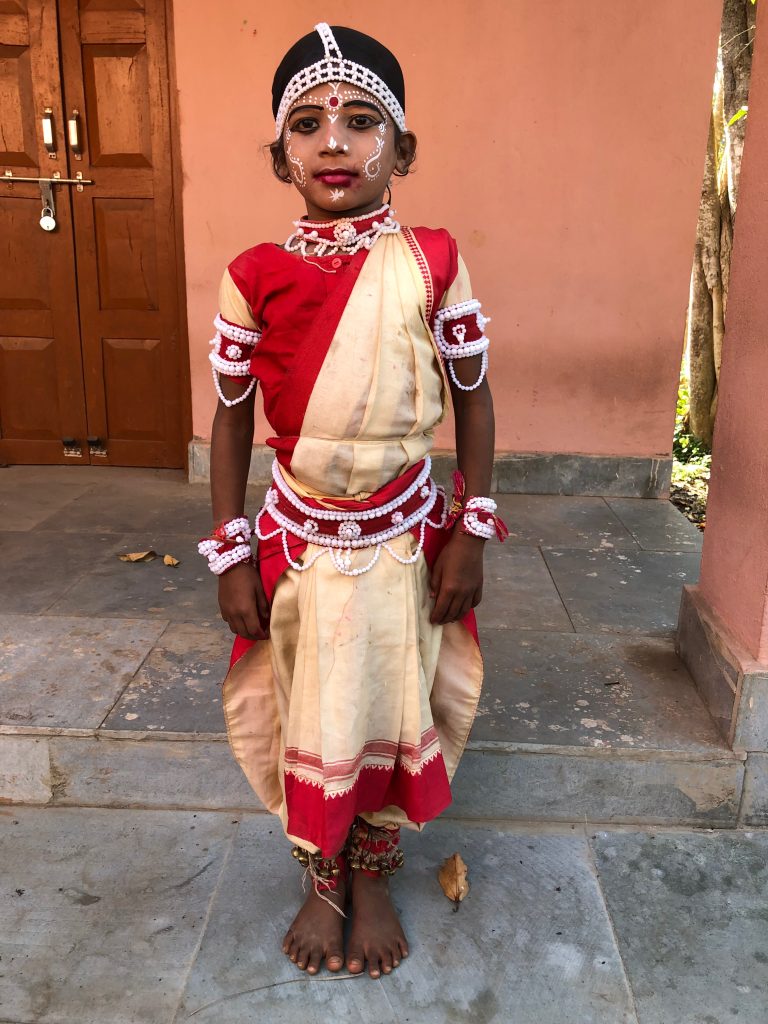
As I look around, I can see shy boys aged between 5-15 years dressed up like women, with large bindis on their foreheads, kohl rimmed eyes, bright red lipstick, flowers in their long hair, dancing away to songs and verses composed on Radha and Krishna. It was believed that the Gotipua dancers were the feminine companions of Lord Krishna when he was a boy.
They are adorned in traditional costumes in silk which include a bright coloured blouse called “Kanchula” and a “Nibibandha” that is worn like an apron. The latter is tied around the waist and it spreads like a fan around the legs. The jewellery is designed especially for the dancers and it includes necklaces, earrings, bangles and bracelets, anklets and armbands.
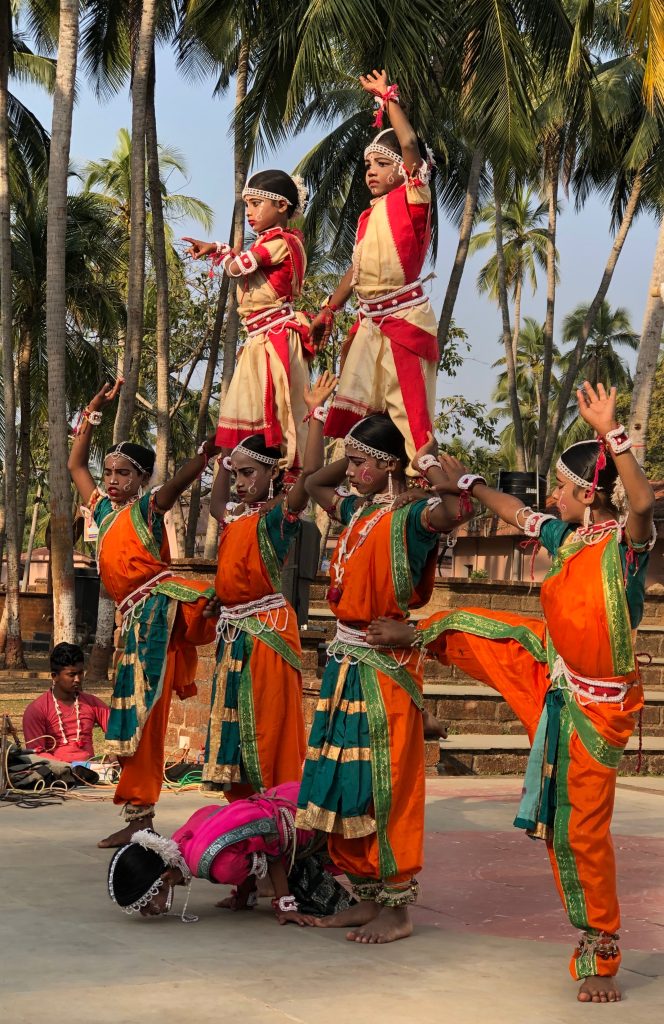
The dancers paint a vivid picture but the dance is exuberant, energetic and acrobatic and is choreographed with many fleet-footed movements that literally take your breath away. Most dancers start learning at a tender age of five so that the movements are flexible and fast. The dancers am told are rehearsing for a performance at the village for an event.
Although the traditional dance dates back to the 16th century, today it is schooled and practised in just Raghurajpur and Puri where the tradition is being kept alive. As I leave the village, the music fades away but the vivid faces of the young boys are etched in my memory.
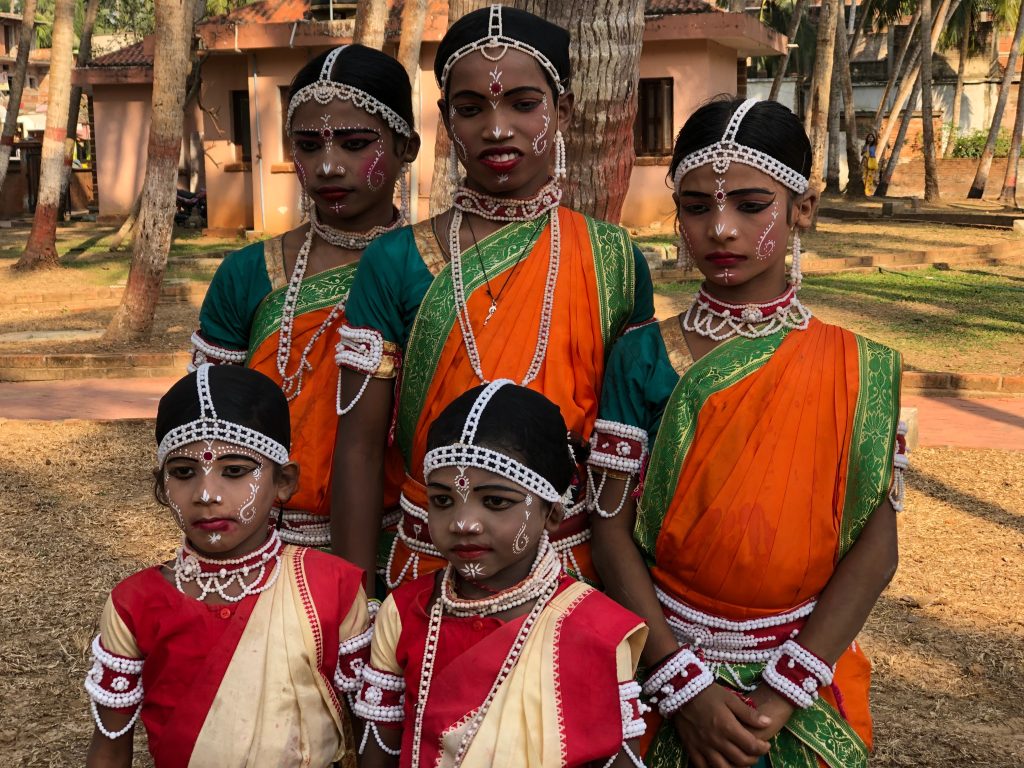
This article was published in Deccan Herald as well.

